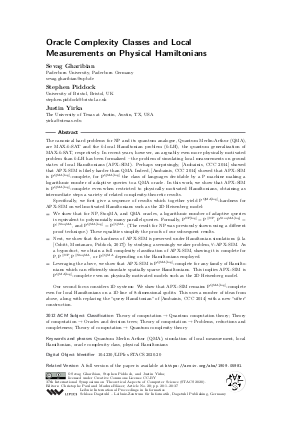LIPIcs.STACS.2020.20.pdf
- Filesize: 0.76 MB
- 37 pages

 Creative Commons Attribution 3.0 Unported license
Creative Commons Attribution 3.0 Unported license









Feedback for Dagstuhl Publishing